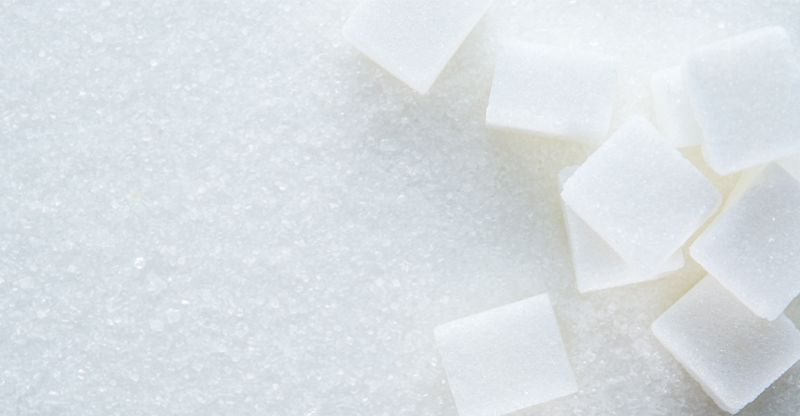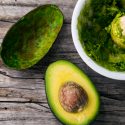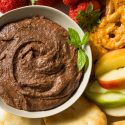Naturally occurring and added sugar
SUGAR: It is the latest four-letter word in the world of nutrition. It seems as if everyone’s talking about it, everyone’s trying to avoid it, and it’s everywhere in the media. And yet, in my experience, very few people really know what the big deal is or why they’re cutting it out of their diets.
What is sugar?
Sugar is a general term used to describe a variety of sweet-tasting carbohydrates found in the tissues of most plants. When we eat sugar, specialized enzymes digest it into its simplest parts, from where it is absorbed into the blood. It then either gets used right away for energy for our cells or stored for later access. There are two types of sugars: naturally occurring and added sugar.
Naturally Occurring Sugar
Naturally occurring sugars are inherently part of certain foods. Fruit, vegetables, grains, and dairy all contain some amount of sugar that naturally occurs. And that’s a good thing! These sugars are our primary source of energy — they’re the gas for our engine! The sugar in these foods is packaged along with a multitude of vitamins and minerals, as well as fiber, protein, and healthy fats, depending on the food. These nutrients all work together to help our bodies work optimally.
Naturally occurring sugars have not been implicated in the development of any chronic disease.
Added Sugar
Added sugars are those that have been added to foods to increase their sweetness. They go by many different names, a selection of which are shown in the list below. These days, you can find some type of sugar added to just about any packaged food, but we still consume the majority of added sugar in beverages. Added sugars are digested the same way as naturally occurring sugars and also provide energy for our cells to use now or later.
Added sugars have been shown to play a role in the development of several chronic diseases, including high blood pressure, high triglycerides, heart disease, diabetes, and obesity.
Added Sugar Aliases
- Agave
- Brown sugar
- Corn sweetener
- Dextrose
- Fructose
- Fruit juice concentrates
- Glucose
- High-fructose corn syrup
- Honey
- Invert sugar
- Lactose
- Maltose
- Malt syrup
- Molasses
- Raw sugar
- Sucrose
- Sugar
- Syrup
What’s the big deal?
If naturally occurring and added sugars are digested the same, why is there such a difference in the impact they have on health? Remember all the health promoting “friends” along with which naturally occurring sugars ride? Well, added sugars often ride with a health-assaulting gang of salt, saturated fat, trans fat, and alcohol — and few (if any) vitamins and minerals. And it’s really getting out of control. Research shows the average American now consumes 22 teaspoons of added sugar daily, which amounts to 130 pounds a year and 3,550 pounds over a lifetime! That’s enough sugar to fill an industrial-sized dumpster! All this added sugar displaces nutrition we need while providing excessive calories, creating a population of undernourished but overweight people.
Recommendations
Since added sugars seem to be damaging to our health in high concentrations, the 2015-2020 Dietary Guidelines recommend no more than 10% of your daily calories come from added sugar. The American Heart Association goes even further, recommending no more than 9 teaspoons a day for men, 6 teaspoons a day for women and children over 2, and no added sugar for children 2 and under. For reference, one can of Pepsi contains more than 10 teaspoons of sugar!
There is no recommended limit on naturally occurring sugar.
Tip: To figure out how much sugar is in a food, take the number of grams of sugar listed in the nutrition fact panel and divide by 4 to get the number of teaspoons. Remember that this is both natural and added sugars, until a new labeling law goes into effect in 2018.
Take Action
All added sugars contain about the same number of calories, and nutritionally, one really isn’t a lot better than another (some may contain a few more vitamins or minerals, but it is negligible), so it’s not advisable to replace one with another. So what should you do? Here are some of my best tips for reducing added sugar intake:
- Eat fruit for dessert.
- Cut sugar in recipes by a quarter to a half.
- Choose fresh fruit or canned fruit in juice rather than syrup.
- Reduce use of processed foods and cook from scratch more often.
- Watch out for seemingly healthy foods, like yogurt, cereal, peanut butter, and granola bars, which often contain a lot of added sugar. Choose versions with the least amount of sugar.
- Condiments count too! Coffee creamers, salad dressing, ketchup, barbecue sauce, teriyaki, and many other popular condiments add to your sugar intake.
- Drink more water and unsweetened beverages instead of sugary beverages
Reducing your added sugar intake slowly over time will allow your taste buds to adjust more comfortably. You’ll start to notice the natural sweetness of foods more prominently, and some foods high in sugar may even seem too sweet.
Be aware that having low sugar doesn’t automatically mean a food is healthy! Added sugar is only one piece of the puzzle when it comes to eating healthier, but for some people, it can be helpful to focus on one piece at a time. Lowering your intake of added sugar may seem like a tall order, but you can do it by taking it one bite at a time (literally!) — and your health will thank you for it.




